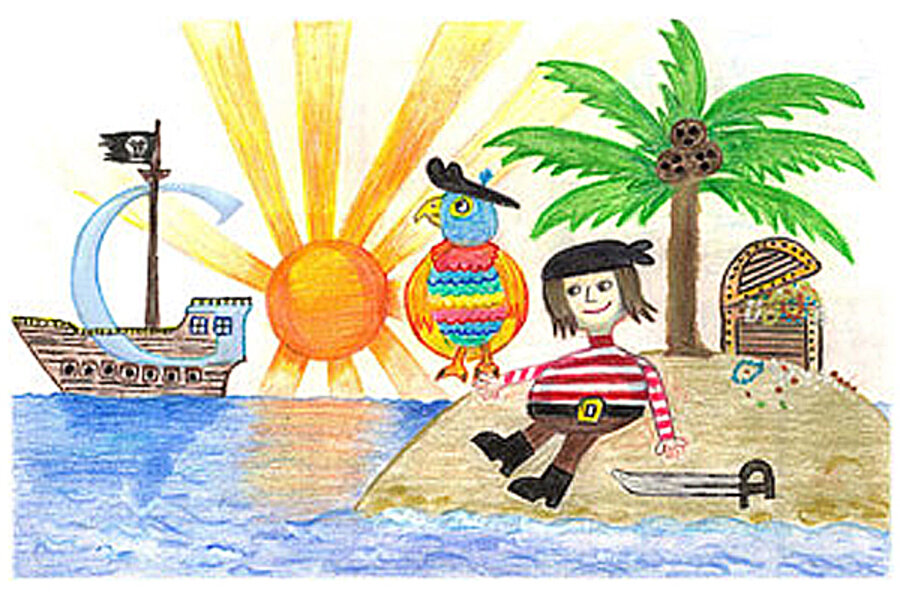Doodle 4 Google: Why a pirate stormed Google's homepage today
Today's Google doodle doesn't follow the normal trend. It's not for a holiday, a great artist, or science celebrity. That's because today's drawing comes from Dylan Hoffman, a second-grader in Wisconsin.
He won this year's Doodle 4 Google contest, an annual competition between student artists. The winner gets his or her drawing pinned up on the biggest fridge in the world: Google's homepage.
Each year, Doodle 4 Google picks a theme. This time, Google wanted to know, "If I could travel in time, I'd visit..."
Students drew dinosaurs, ancient Egypt, and visions of the future. Dylan prefers a life at sea. His submission, "Pirate Times," holds all of the swashbuckler trappings: parrot, skull flag, bandana, treasure, a deserted island. And, like the professional doodles, everything fits neatly into the classic Google logo.
Dylan will receive a $30,000 college scholarship and a Chromebook computer (a laptop with Google's own operating system). His elementary school in Racine, Wis., will get a $50,000 grant for technology. Four finalists will receive a $5,000 college scholarship.
Exploration was big this year. Beyond Dylan's adventure at sea, Cynthia Cheng from Edison, N.J., drew a giant octopus attacking a Viking ship. Susan Olvera of Lafayette, Ind., depicted a galactic journey with aliens. Talia Mastalski, from Indiana, Penn., showed a girl tumbling through "The Wormhole of Life." The fourth finalist, Herman Wang of West Covina, Calif., drew an intricate "Retro City."
Doodle 4 Google pulled in 114,000 submissions this year. From there, millions of votes narrowed the selection to one image in each age group from each state. You can see all of the finalists on the Doodle 4 Google website – or at an exhibit in the New York Public Library from May 18-July 19.
Last year, the top honors went to "Space Life," a wonderfully weird drawing created by Matteo Lopez, a seven-year-old from South San Francisco, Calif.
And in 2010, nine-year-old Makenzie Melton said that her Doodle 4 Google drawing, called "Rainforest Habitat,” aimed to raise awareness that "the rainforest is in danger and it is not fair to the plants and animals. I love everything except spiders and snakes, but I would still save them.”
For more on the intersection of technology and daily life, follow Chris on Twitter @venturenaut.






